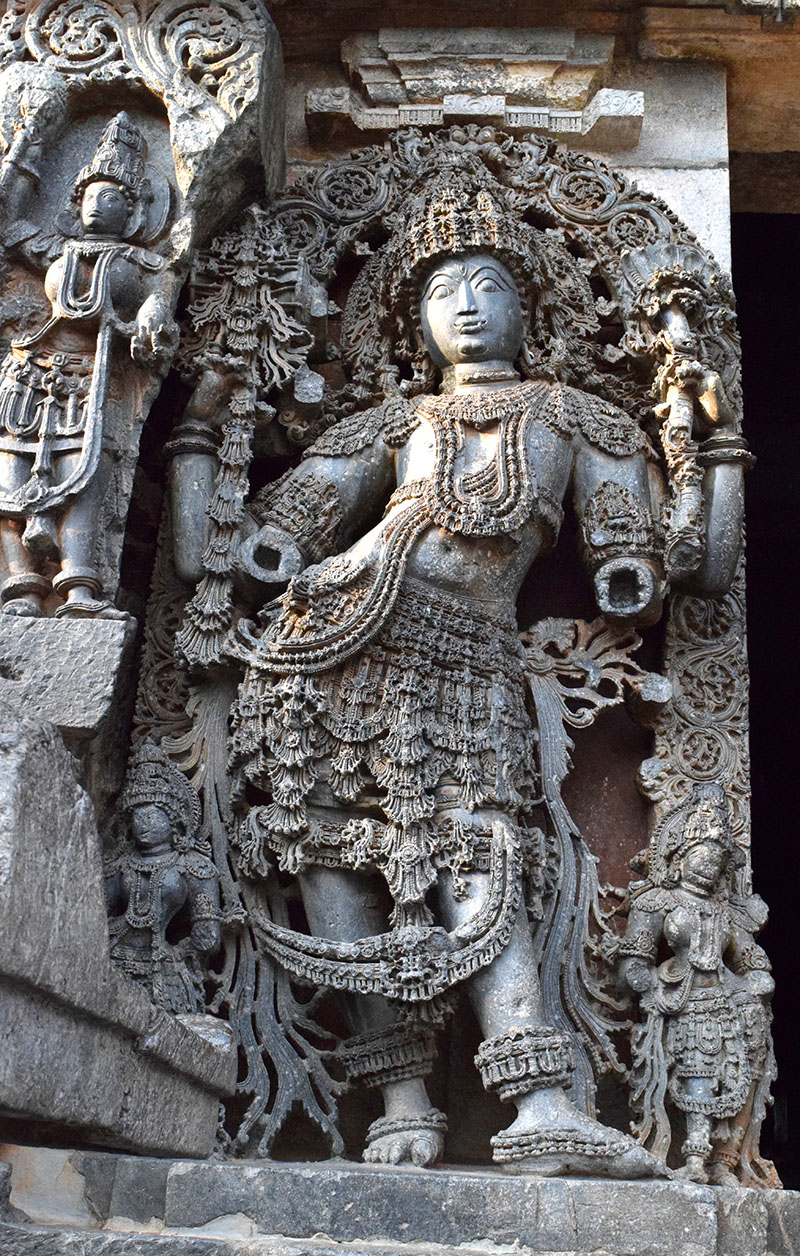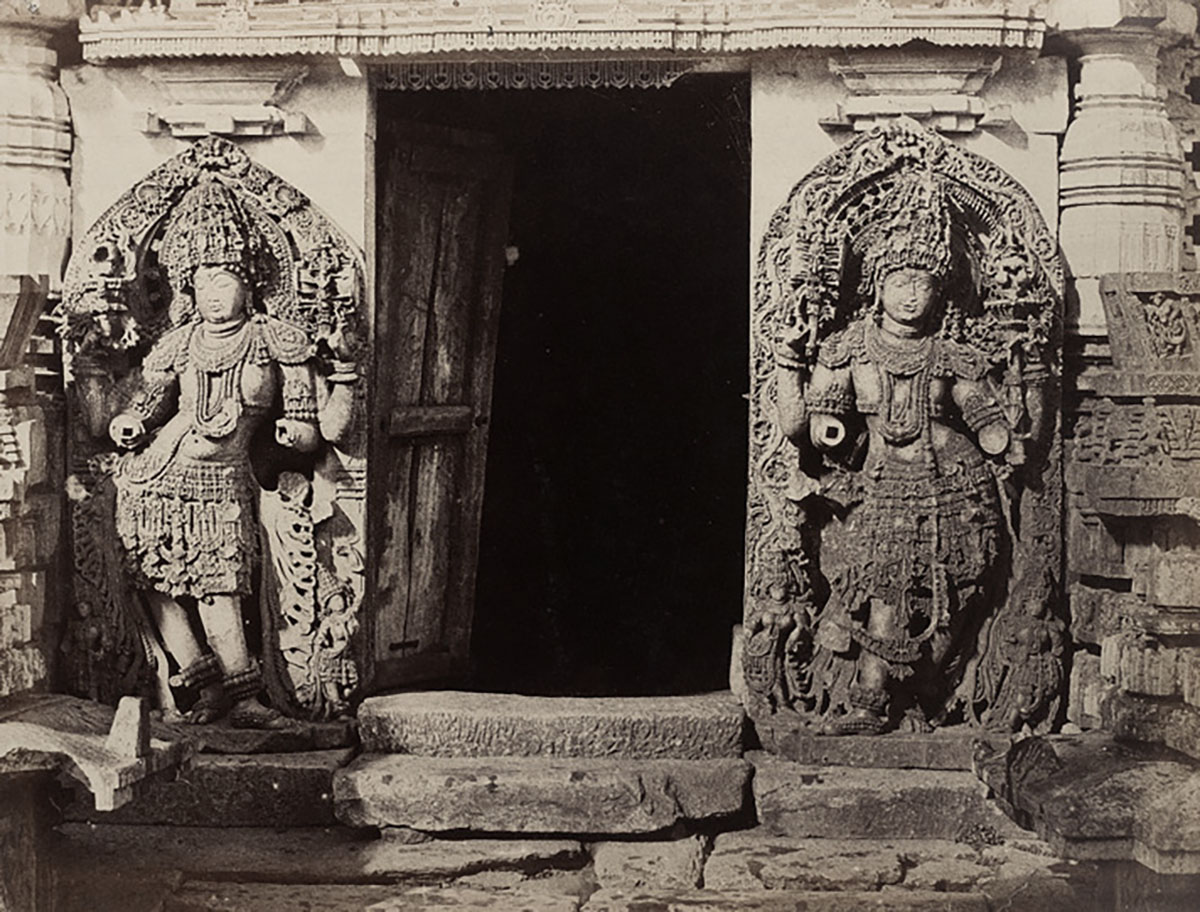Sculptures of semi-divine and divine mythological beings that flank doors and entrance ways in Hindu, Buddhist and Jain temples, dvarapala statues embody the concept of door guardians found in these religions. The term itself derives from a combination of the Sanskrit words dwara, meaning “door,” and pala, meaning “protector.” Also known as dvarapalaka, dvarapala usually protect shrines of male deities, while their feminine counterparts, dvarapalikas, guard the entrance ways of temples dedicated to goddesses.
Dvarapala statues are believed to ward off evil and distinguish a temple space from other architectural forms. They are found at various access points within a temple, including the main entrance, as well as entrances to the sanctum sanctorum and the mandapa (halls). In Hinduism, dvarapala figures comprise a wide diversity of iconographical imagery, from sculptures of semi-divine beings such as nagas and yakshas to mythological beings such as Nandi and Chanda-Prachanda, the river goddesses Ganga and Yamuna, and notable sages. Nagas and yakshas as dvarapala are also found in Buddhist architecture, along with bodhisattvas.
Dwarapala may be depicted kneeling or standing, with one or multiple pairs of arms and with ferocious or calm visages. Their headdresses can range from matted locks to horned headdresses, or kiritamukuta, and their hands are depicted in a variety of mudras or gestures. The iconography of dvarapala statues also borrows elements from the deity they are stipulated to protect. For example, Shaivite and Vaishnava dvarapala statues may carry symbols emblematic of Shiva and Vishnu in their hands, and certain kinds of Shaivite dvarapalas may even be depicted holding clubs and with protruding teeth and horns. Similarly, in Mahabalipuram, a shrine believed to be dedicated to Brahma has dvarapala figures depicted with ankle-length garments and matted locks, holding a flower or a vessel.
Dvarapala statues and their place within a temple find mention in texts such as the Brihata Samhita and the Agni Purana. In religious architecture, nagas and yakshas as dvarapala figures were represented in the torana and vedika of Buddhist sites such as Bharhut. In the Buddhist caves at Ellora, dating between the seventh and eighth centuries CE, the dvarapala assume the form of bodhisattva figures such Avalokiteshvara, Manjushri, Samantabhadra and Vajrapani, who are also considered guardian deities. At the same site, in the Kailasanatha temple complex, the river goddesses Ganga and Yamuna flank a shrine dedicated to Shiva.








